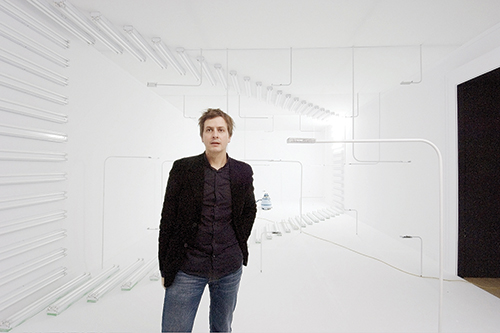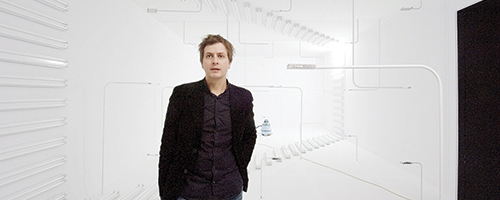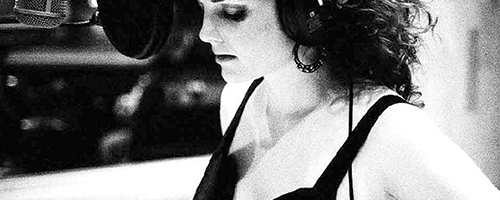“How do you bring architecture to a new generation?” asked Nora Wendl, assistant professor of architecture at Portland State. “How do you use everything in the toolbox to engage them?” These were questions Wendl was thinking about when she began development for the School of Architecture’s upcoming architectural symposium, “Strange Utility: Architecture Toward Other Ends.”
Architecture lecture!

“How do you bring architecture to a new generation?” asked Nora Wendl, assistant professor of architecture at Portland State. “How do you use everything in the toolbox to engage them?”
These were questions Wendl was thinking about when she began development for the School of Architecture’s upcoming architectural symposium, “Strange Utility: Architecture Toward Other Ends.”
The symposium will take place next Friday and Saturday and will feature several architects and artists of international acclaim. The guests will discuss a breadth of approaches to architecture, from graphic novels to scholarly pursuits and contemporary art practice.
In addition to the lectures, which will be held in the Shattuck Hall Annex, the symposium will also welcome guests to a reception in the architecture office and an art reception in neighboring Smith Memorial Student Union’s Littman Gallery.
Guests are also invited to attend a breakfast the following Saturday morning, ahead of the day’s series of lectures.
“It’s rare that we have an opportunity when the practitioners and the makers can meet and talk with the scholars,” Wendl said. “We wanted to bring in minds that were flexible enough that they could meet and think about things architecture normally doesn’t address.”
The lectures will be organized into different sessions, each dealing with architecture from a different discipline or philosophical approach.
Friday’s session, “Architecture and the Arts,” will feature an array of practicing artists, including keynote speaker Jimenez Lai, a graphic novelist and assistant professor of architecture at the University of Illinois at Chicago.
“He approaches architecture through the vehicle of the graphic novel,” Wendl said. “Instead of writing about architecture, he puts his ideas together in a visual narrative.”
Friday’s session will end with a visit to the Littman Gallery, which is currently displaying work by Chicago-based artist Inigo Manglano-Ovalle. The exhibition, titled “Always After (The Glass House),” is showing as part of the symposium and features work inspired by the architecture of Ludwig Mies van der Rohe.
Manglano-Ovalle will present a gallery talk about his work for the symposium.
“He’s a contemporary artist in the true sense of the word, but he doesn’t present drawings and the like,” Wendl said. “The upside-down house shown in the Littman is one example of his architecture-inspired work. For Inigo, Mies’ glass houses are an opportunity to tell a story through the use of architecture. Architecture is a dramatic backdrop because it is not a linear narrative.”
Littman Gallery Curatorial Coordinator Leif Anderson noted the rarity of a visit by an artist of Manglano-Ovalle’s caliber.
“This is a great opportunity to have a really big artist in town, especially on campus,”
Anderson said. “To have him here to discuss his work will be a great chance for students.”
Saturday’s sessions will occur exclusively in the Shattuck Hall Annex, beginning with a breakfast reception at 8:30 a.m. The first session, “Utility,” will cover both architecture’s traditionally functional role and its history.
The session will begin with a keynote lecture by University of California, Berkeley, architecture professor Jill Stoner. In addition to teaching, Stoner is also the author of the architecture books Poems for Architects and Toward a Minor Architecture.
“It can be rare to find architectural writing that uses language that’s not businesslike,” Wendl said. “Jill Stoner is a wonderful writer, and she created a work about minor architecture that was more poetic in tone. Major architecture would be a building that stands on its own. Everything that makes such a building possible is highly political.”
Anderson, a Portland State master of fine arts candidate, explained that Stoner’s writing directly influences much of his own art practice.
“Her book is a huge critique of architecture,” he said. “She writes about architecture in a minor way, wherein architecture can be reclaimed from capital. She points to abandoned spaces such as malls as places that can be taken back.”
Anderson also pointed to Stoner’s lecture as a significant part of his interest in the symposium.
“For me, she is a key feature,” he said. “I’m a huge fan.”
The symposium will conclude Saturday afternoon with a final session, titled “The City (Urban Utilities).” It will close with a final keynote by Paris-based architect Philippe Rahm. Rahm’s practice involves an exploration of architecture that involves meteorology and energy.
“Rahm is talking about energy and architecture in a way that is unique,” Wendl said. “Most of the time when architecture talks about energy, it is thinking of lighting and the like. Rahm explores the effect on the human body of the energy in a space. His work bridges the scientific and the poetic.”
Strange Utility: Architecture Toward
Other Ends
Friday, April 26, and Saturday, April 27
Shattuck Hall Annex
$13 advance, $23 general
Free for students and faculty with registration
Tickets and info at pdx.edu/architecture or PSU Box Office
Both Wendl and Anderson encouraged members of the university community to take advantage of the symposium.
“What’s exciting to me about this symposium is that it doesn’t have a practical determinism that architecture has had throughout history,” Anderson said. “It can just be about creating space, and other creative uses. It seems to subvert the traditional role of architecture.”
Wendl also noted that the lectures could provide interesting insights to students from disciplines other than architecture.
“We all live in buildings,” Wendl said. “We all engage with them all the time. While we would love to see everyone from the architecture department there, we’re hoping to open the building to everyone.”







